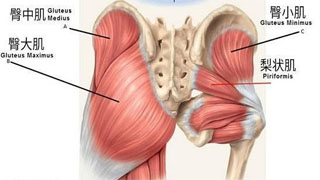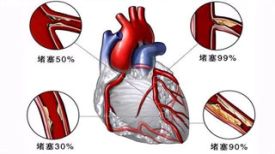
Pear shaped muscle syndrome, also known as pear shaped muscle syndrome, refers to the symptoms of buttock pain caused by the pear shaped muscle and sciatica caused by sciatic nerve compression by the pear shaped muscle. This is a little-known disease, in which the piriformis muscle located in the buttocks can "cramp" and cause pain in the buttocks. The piriformis muscle can also stimulate the nearby sciatic nerve, causing pain, numbness, and tingling in the back of the leg and feet (symptoms of sciatica).
Speaking of piriformis syndrome, some people may not have heard of it. This is a common type of sciatica, caused by the compression of the sciatic nerve in the buttocks. The main symptom of patients is sciatica, and when the symptoms are mild, radiating pain may occur in the buttocks and lower limbs. In severe cases, the pain can be severe, leading to difficulty walking, and some patients may experience atrophy of the gluteal and calf muscles. Today we will talk about piriformis syndrome and how to rest.
What is piriformis syndrome
The piriformis muscle is distributed on the inner side of the pelvis and is innervated by the 1st and 2nd sacral nerves. Its function is to control the external rotation of the thigh. Pear shaped muscle syndrome is a group of syndromes mainly caused by sciatic nerve pain due to mechanical compression of the sciatic nerve caused by pear shaped muscle injury, or adhesion of this segment of the sciatic nerve for some reason. Manifested as pain in the affected buttocks accompanied by radiating pain in the lower limbs, sometimes severe and unbearable, affecting rest and daily life.
origin
It is often caused by indirect external forces, such as flashing, twisting, crossing, squatting, etc., which elongate and over stretch the piriformis muscle and cause damage.
Symptoms of piriformis syndrome
The injured person feels that their lower limb on the affected side has become shorter and they are walking with a limp. Deep pain in the buttocks, radiating towards the posterior or lateral side of the lower limb on the same side, occasionally accompanied by numbness on the outer side of the calf and discomfort in the perineum. The body is semi bent when walking. Severe cases may experience "knife like" or "burning like" pain in the buttocks, and difficulty in bending both lower limbs.
Relief methods
1. Pear shaped muscle stretching
-The patient is seated, with the stretched lower limb placed on the opposite lower limb in a four character shape.
-Lean forward to feel the stretch of your hips, or grip your knee joints with both hands and pull towards the opposite shoulder.
-Maintain for 10-15 seconds each time, repeat 3 times. Practice alternately on both sides.
2. Mid gluteal muscle strength training
-The patient lies on their side, keeping their ankles together. Elastic bands can be placed slightly above the knees of both lower limbs to increase resistance.
-Use force to open both legs to the maximum extent, pause briefly, and slowly return to the initial position. Practice 10-12 times as a group, for a total of 3 groups. When advancing, use a more elastic band to increase resistance.
3. Thigh adductor muscle strength training
-Lie on a yoga mat or floor, bend your hips and knees, bring your feet and knees together, and place an elastic ball or ring between your knees.
-Squeeze the elastic ball or ring with both knees. Practice 10-12 times as a group, for a total of 3 groups.
4. Low level core stability training - alternating heel contact in supine position
-Lie flat on the yoga mat, bend your hips and knees, place your feet flat, and lift your upper body off the yoga mat.
-Alternate touching the same two ankles with both hands and repeat multiple times.
5. Mid level core stability training - aerial pedaling
-Lie flat on the yoga mat, place your hands on your head, open your arms, lift your legs, and slowly pedal your bike.
-During the process, touch the left knee with the right elbow, then touch the right knee with the left elbow, and repeat alternately.
1. Patients with piriformis syndrome should maintain relaxation and rest of their piriformis muscles when choosing a sleeping position. When sleeping, you can adopt a supine position with your legs slightly apart, which can relax the piriformis muscle, improve the compressed piriformis muscle, and relieve pain.
2. When lying on the side, place the painful lower limb above and place a cotton blanket or thick pillow between the legs to keep both lower limbs parallel. If it's a little higher, it's also possible to keep the hip joint in an abduction and external rotation state, which can maintain the relaxation and rest of the piriformis muscle. It is important to avoid hip adduction and internal rotation, as this action can lead to excessive stretching of muscle tissue, as well as inflammation and stimulation, resulting in more pronounced pain symptoms.
3. The treatment of piriformis syndrome can be achieved through infrared hyperthermia, which utilizes infrared radiation to alleviate pain, reduce swelling, and promote local blood circulation, thereby reducing the patient's pain. Acupuncture and moxibustion can also be used to stimulate the buttock points, so as to relieve piriformis spasm and reduce the pain of patients. Massage techniques can also be used to promote blood circulation and reduce pear shaped muscle damage, which can be helpful for the recovery of pear shaped muscles.
The above is an introduction to the treatment and prevention of piriformis syndrome. Patients should focus on rest in their daily lives, avoid excessive movement to prevent compression of painful areas, and avoid repeated rotations and bending movements. We also need to maintain a positive and optimistic attitude to avoid adding to our psychological burden. If the relief measures do not alleviate the symptoms, please seek medical attention promptly.


